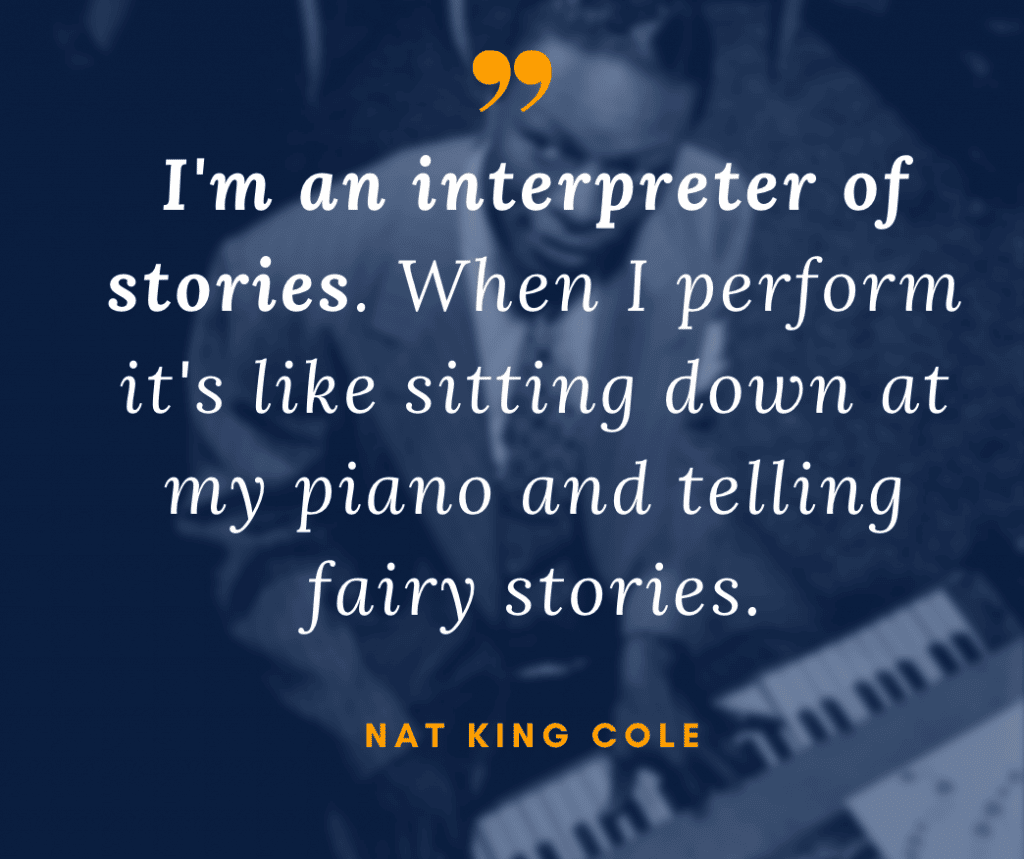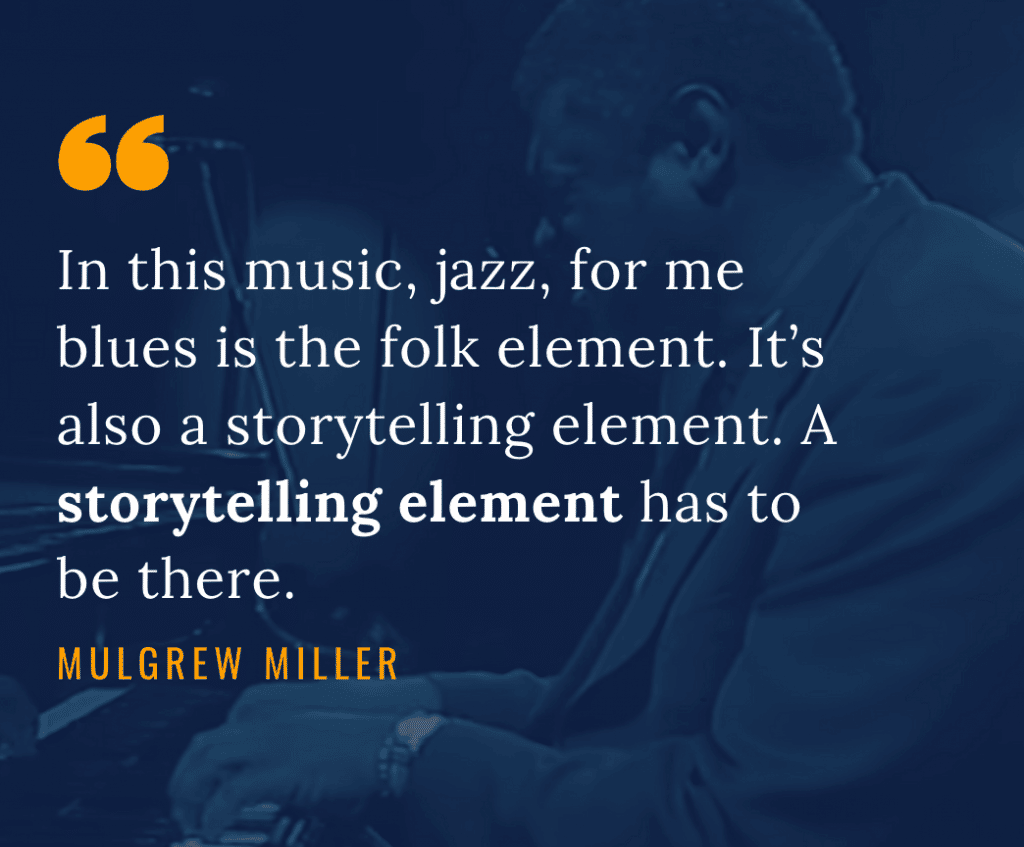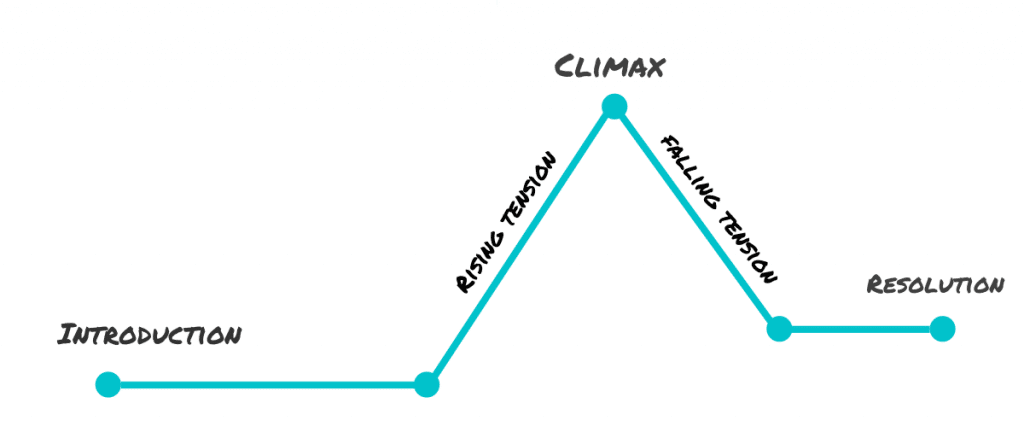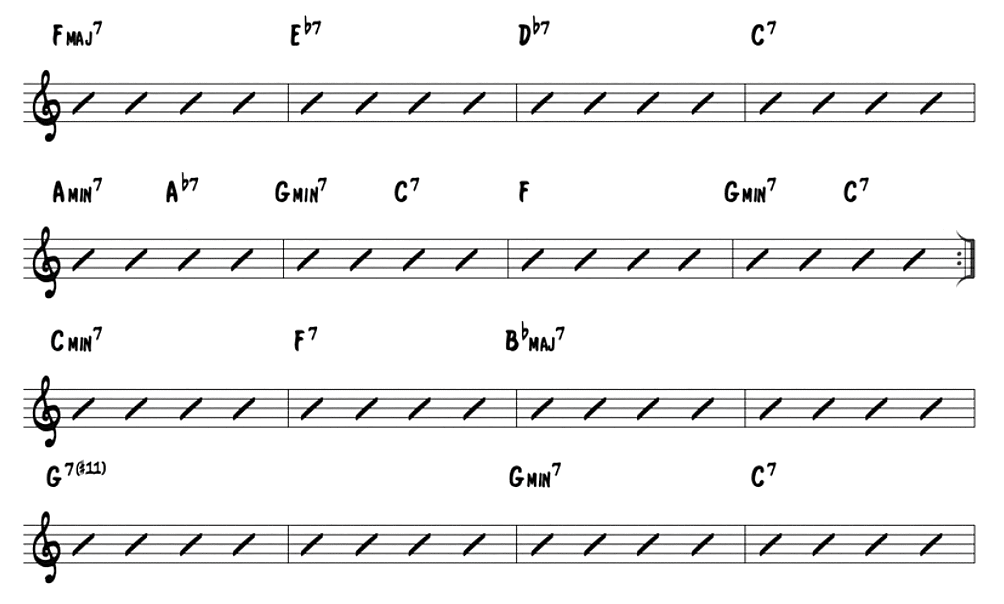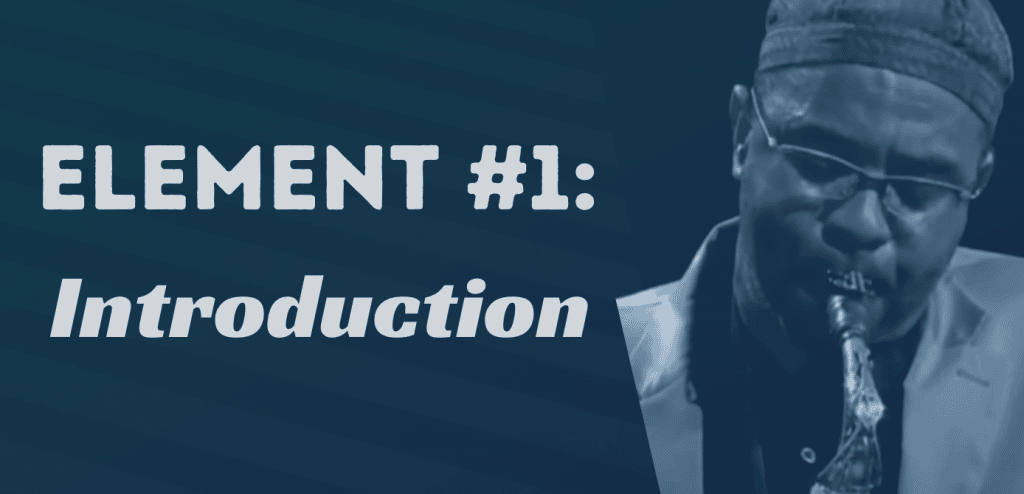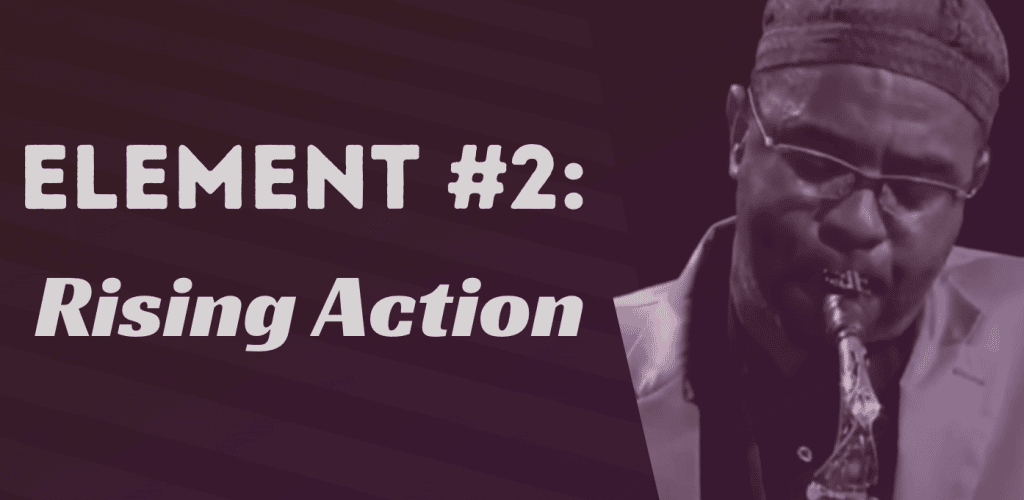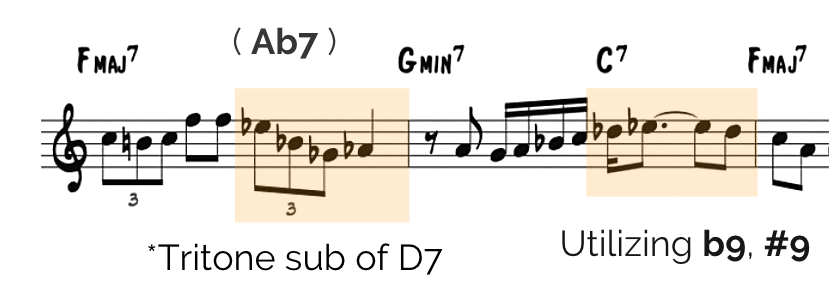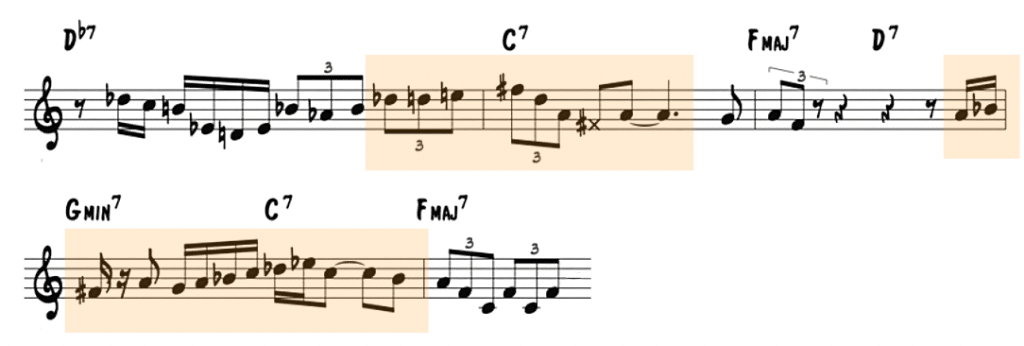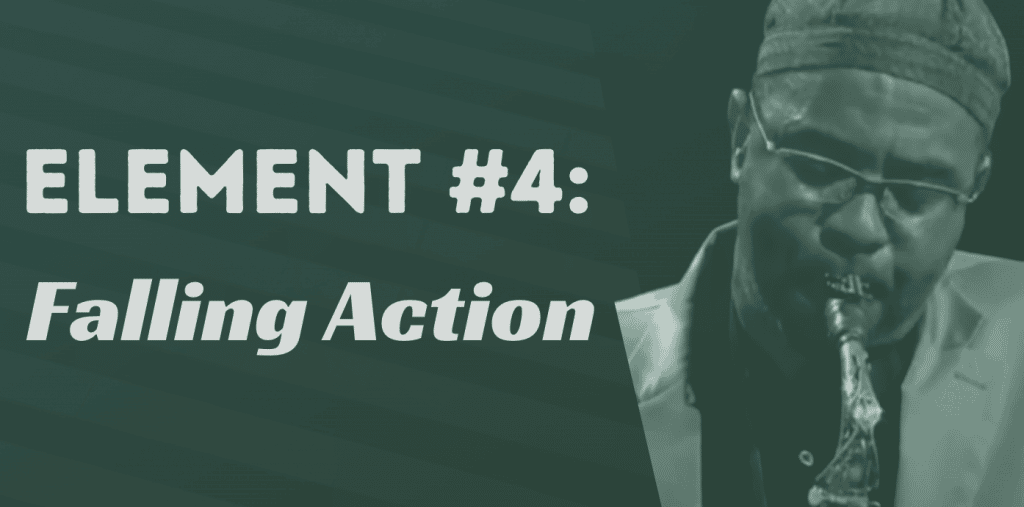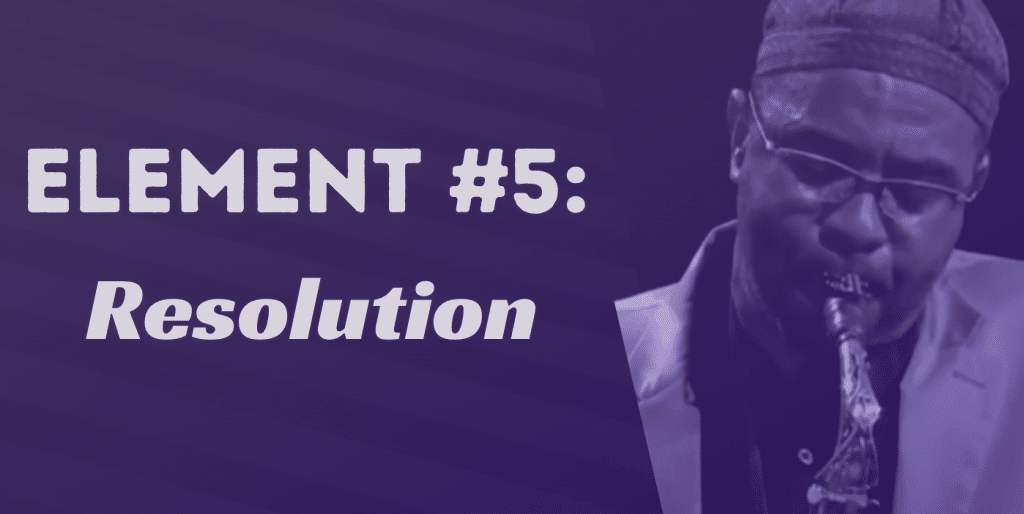Think of a jazz standard that you often play. One that you’ve been working on in the practice room. Picture the chord progression in your mind and imagine yourself getting ready to play the first note of your solo. Now stop! This time I want you to take a different approach to the tune…
Rather than falling into the habit of thinking about notes and chords, this time I want you to clear your mind and ask yourself one simple question:
What story do I want to tell the listeners??
You see, beyond playing the right notes, worrying about scales, or simply making it through a progression lies the idea of creating a musical moment with your fellow musicians and the audience…
This is where the magic of music lies, especially when it comes to jazz improvisation. And it’s a crucial point that many players forget as soon as they look at a chord progression.
But listen to any great improviser and you’ll immediately hear it. Think of Miles, Coltrane & Cannonball playing on Kind of Blue – you’re instantly struck by the story they tell and the musical picture they paint. It’s as if the specific notes don’t really matter at all!
Every great musician and improviser understands this vital aspect of creating impactful music and knows how to take the listener on a journey.
They know how to create an atmosphere with their sound and a groove with their time. They know how to build a story with each successive phrase and how to leave the listener with a message…
And if your goal is to play music that moves people, you need to incorporate this element into your playing as well!
Story & the Art of Improvisation
Have you ever listened to a solo or a composition and felt oddly unsatisfied?
The notes could all be correct. The technique could be flawless. There were high notes, low notes, fast notes, and harmonic complexity. But when all is said and done you’re left thinking…”meh.”
For some reason the music didn’t go anywhere. It didn’t move you or connect with you as a listener. There was nothing to follow. It was just notes and more notes played over chords…so what?!
The missing piece of the puzzle here is an element of story.
You see, as humans, we’re hardwired to follow a story…
We latch onto intriguing ideas, we relate with characters, we mirror emotions, we follow the twists and turns of a plot, and we want to know what happens in the end.
This effect is the same whether it’s a scary story told over a campfire, a classic movie, a stand-up comedy set, or an improvised solo flowing out of a speaker.
Piece by piece we’re drawn into the narrative and transported from our day to day experience. However, remove this story quality from the equation and you’re left only with information, technique, words, notes…
The magic and emotion of the journey suddenly disappear.
This is the power of story, and why it’s essential for every improviser to incorporate it into their playing. The path there is easier than you think, it starts with learning the specific elements that go in to any story…
Utilizing the 5 Elements of Story
Nearly every story that you come across uses the same underlying structure…
From children’s books and Shakespearean plays to movie scripts and the latest books on the best seller list. Each one relies on a framework to create an experience for the audience, a journey that they take along with the author.
This dramatic framework consists of 5 basic elements:
- An Introduction – Set the stage, establish character and plot
- Rising action – Introduce an obstacle, add layers to story
- A Climax – The highpoint of the action and tension
- Falling action – Resolving the tension and returning to the theme
- Resolution – Concluding the story and imparting a message
This five-part structure creates a narrative arc from the beginning of the story all the way to the end. A premise that the reader is drawn into and can follow along with each step of the way…
This same structure can be applied to music as well, especially when it comes to crafting an improvised solo over a chord progression. Think about it – when we play a solo we’re essentially creating this story arc in real-time.
Rather than approaching improvisation as simply playing notes over a chord progression, shift your mindset and think “What story am I telling in my solo?”
Let’s take a closer look at how these story elements relate to jazz improvisation. Here’s how you can apply the 5 elements of storytelling and story arc to any tune you might play…
- Establish your voice, your sound, and the vibe. Who is your character?
- Make a clear musical statement & create a theme
- Which tonal colors are you using? Which rhythms are you using?
- Begin to develop and add layers to your initial themes
- Incorporate harmonic tension and rhythmic complexity
- Add momentum, tension, and forward motion to your phrases
- This is the highpoint of excitement and action in your solo
- Utilize rhythmic movement, harmonic tension, range & dynamics
- This is the spot where all of the previous themes are leading
- Resolving the tension after the climax
- Return to the theme and simple ideas of stated earlier
- How are you ending your solo?
- Conclude the ideas you presented and developed in your solo
- What do you want to leave the listener with?
With this broad outline of your solo you’ll be able to take the listener on a journey through the tune. To add an element of story, structure, and feeling that gets beyond the notes and chords
But rather than just talking about these concepts, let’s check out this story framework in action from one of the best improvisers alive today…
Kenny Garrett: Creating a story arc in your solo
A perfect example of structuring you musical ideas in a story-like arc is Kenny Garrett’s solo on the tune Boperation by Fats Navarro.
…it’s a one chorus solo that tells a musical story from start to finish.
You’ll find this solo on the Freddie Hubbard/Woody Shaw album Double Take from 1985. Kenny’s solo begins at [1:45] in the video below, take a listen:
The chord progression to Boperation is typical of one that you’d find in any jazz standard…
In the key of F Major you’ll find:
- The I chord descending by whole-step to the V7
- A turnaround and ii-V back to I
- A Bridge with a ii-V to the IV chord, the II7 and a ii-V back to I
- Return to the A section
Nothing particularly unique here, but remember, improvising a great solo is all about how you create a musical story through the progression…
Take another listen to Kenny’s solo, this time at a slightly slower speed. Instead of listening for specific techniques, listen to how he develops the solo from start to finish:
Now how exactly do you utilize the elements of story to create a solo over this progression?
K.G.’s 5 Storytelling Tactics
Let’s take a closer look at how Kenny utilizes the 5 elements of narrative arc to create a moving solo in the space of one short chorus. We’ll start with the first element…
1) Introduction – set the stage
Kenny begins his solo with this phrase…
The first thing to look at in his introduction is how he sets the stage by creating a musical “character.”
From the first note you know it’s Kenny Garrett, it’s his distinctive sound. He is creating an atmosphere for his solo and differentiating himself from the other soloists with his unique “character traits.”
Specifically, his freedom with the time and rhythm, laying back, and playing slightly under pitch. These are all elements that define his character and the mood of his opening phrase, setting the stage for the rest of his solo.
Next let’s look at some of the melodic themes Kenny creates. The first four bars feature a descending progression:
Rather than worrying about each individual chord, he plays a simple melodic idea that spans the entire progression:
To create this phrase he looking at where progression is headed, in this case the resolution to the I chord in the fourth bar. He also utilizes common or shared tones between these chords to craft a longer phrase.
The second part of this theme happens over a turnaround in F Maj:
Simple and introductory melodic ideas that are diatonic in the home key. In the second 8 bars he continues with another simple theme:
This time he plays the 5th descending to the 3rd on the F and Eb7 sounds and utilizes standard V7 language over the Db7 chord.
Every idea in his introductory statements is simple, yet effective in establishing his sound and story. This simplicity and diatonic approach also gives him room to develop and go somewhere as the solo continues.
Practice takeaways:
- As you begin, define your sound and the voice of your character?
- What mood/feel do you want to create with your opening statement?
- Start with simple ideas and melodic statements
- Look at larger progression & utilize common tones between chords
2) Rising Action – Develop themes & build tension
At specific points in the first half of his solo, Kenny begins incorporating melodic and harmonic tension to develop and add interest to his opening ideas…
Check out how he concludes the first theme:
Here he is using V7 chords as points of tension that create forward momentum leading to his next musical idea.
In this particular line he uses the tritone sub of D7 (Ab) and highlights the b9 and #9 on the C7 chord before resolving to the I chord:
This introduces some harmonic tension that we haven’t heard yet in the solo and intensifies the resolution leading to the next melodic statement.
Next, look at how he concludes the second theme, again incorporating harmonic tension and rhythmic momentum:
On the Db7 chord he anticipates the upcoming C7 chord, then emphasizes the #11 on the C7, playing a D triad over C. To add to the harmonic tension he uses 8th note triplets:
Then over the final ii-V to F he plays a 16th note passage, adding rhythmic interest and creating momentum to the end of the phrase. Also notice how he again emphasizes the b9 and #9 on the C7.
Practice takeaways:
- Use V7 chords to create tension and forward motion as you develop your solo
- You can alter specific notes or substitute V7 chords entirely
- Use rhythmic motion (tension) as well as harmonic tension in these spots
3) Climax – The musical highpoint
Kenny reaches the highpoint of his solo on the bridge of the tune, playing the phrase below:
In this phrase Kenny utilizes the elements of harmonic and rhythmic tension to the fullest – moving away from the underlying progression and using double-time lines.
He begins with a B Major triad, a half-step away from the underlying C-7 (and tritone sub of F7). Then he moves to A Major material and G Major material…
Rather than playing a typical ii-V-I in Bb, he opts to plays outside of the harmony, creating a sequence that moves down by whole-steps. Notice how he uses chromatic motion to move from BMaj to AMaj, and later minor third movement to connect his lines.
In the second part of this line he delays the resolution to the I chord (Bb), playing C- F7 language on the downbeat of the chord before resolving to I:
Even though the Bb language is diatonic, he plays through it with 16ths notes to create rhythmic motion…even a major scale can be used in an interesting way!
Practice takeaways:
- Create tension in your lines with harmonic techniques, rhythmic motion, or a combination of the two
- Try playing outside of the key, a tritone or half-step away are most dissonant
- Use chromatic motion or create a harmonic sequence to escape the chords
- Utilize double-time lines to create rhythmic excitement
4) Falling action
After the excitement of the climax, Kenny brings things back down, returning to 8th notes and 8th note triplet rhythms…
On the G7#11 chord he emphasizes the #5, hinting at a whole-tone sound and then emphasizes the b9. Before returning to the A section notice how he highlights the #11 on the C7.
Practice takeways:
- Slowly wind down the harmonic and rhythmic activity from the climax
- Find a way to resolve to the final statement
5) Resolution
Kenny brings his solo to a close by returning to the simple melodic ideas he played in the opening lines…
Over the descending progression he uses a simple melodic idea that he continues on each chord, again utilizing the common tones between each sound:
And finally, he ends with a melodic motif using the F Major triad plus the 4th.
Practice takeaways:
- Return to a simple approach to wind down your solo
- Think about the last idea you want to leave in the listener’s ear
What’s your story?
Think about that jazz standard you’re working on in the practice room…
Along with the ii-V’s, the chord symbols, and the melody, you should start thinking about how you can tell a story over the tune.
How are you getting from the first note to the last note of your solo??
How you can structure your ideas in a way that will create a musical story for the audience. How can you take the listener on a musical journey through the progression and leave them with a lasting impression?
It’s not just the notes you play that matter, but how you play them that will leave an impression on the listener.
Strive to add this story element to your musical approach every time you improvise!
Remember, not every solo has to follow the same exact structure. Not every solo has to begin with a theme, and not every solo has to have high notes or fast notes…
But every solo should tell a musical story in some way!

